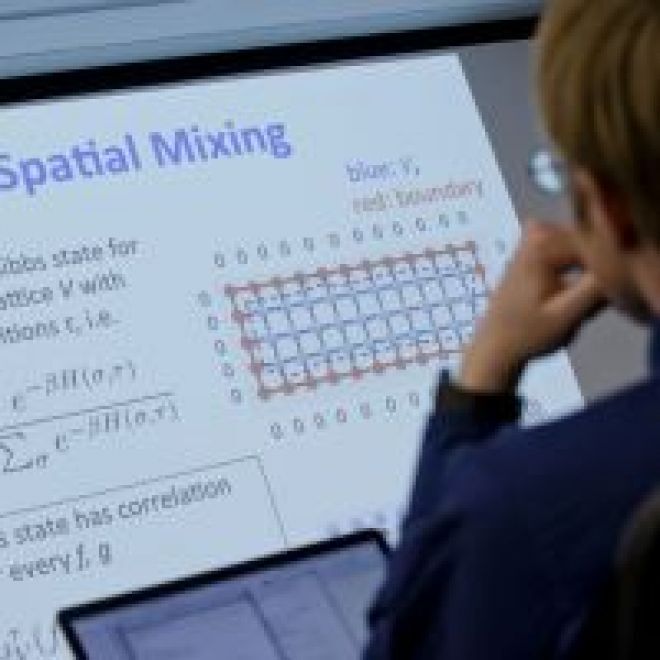The spin-1/2 nearest-neighbor XXZ model on the pyrochlore lattice is an iconic frustrated three-dimensional spin system with a rich phase diagram on the $\lambda$ axis, where $\lambda$ is the XXZ interaction anisotropy.
In the first part of the talk, I will focus on the Heisenberg case $\lambda = 1$, in which the model is debated to possess a quantum spin-liquid (QSL) ground state. In [Phys. Rev. X 11, 041021 (2021)], we contested this hypothesis with an extensive numerical investigation using both exact diagonalization and complementary variational techniques. Specifically, we employed an RVB-like many-variable Monte Carlo ansatz and convolutional neural network quantum states for (variational) calculations with up to $4\times 4^3$ and $4 \times 3^3$ spins, respectively. We demonstrated that these techniques yield consistent results, allowing for reliable extrapolations to the thermodynamic limit. In addition, we found clear indications of a dimer order with spontaneously broken inversion and rotational symmetry, calling the scenario of a featureless QSL into question.
In the second part of the talk, I will consider the region $\lambda \ll 1$, corresponding to the Ising model with small exchange interaction. At the $\lambda = 0$ Ising case, the model possesses a thermodynamically-degenerate ground state, described by the {\it two-in, two-out} spin ice rule. Introduction of finite $\lambda \ll 1$ exchange interaction couples the spin ice ground states and generates the U(1) QSL with emergent U(1) electrodynamics. In this talk, I will demonstrate that this QSL can be embedded into the system of Rydberg atoms governed by the Sengupta-Sachdev Hamiltonian. I will show the preliminary results of the simulation of this embedding within the quantum Monte Carlo approach. This embedding continues the line of QSL-Rydberg mappings [see, for instance, Ruben Verresen et al., Phys. Rev. X 11, 031005] and allows one to simulate the U(1) QSL on the pyrochlore lattice using the analog Rydberg simulator on the system sizes that are otherwise intractable for classical numerical approaches.
